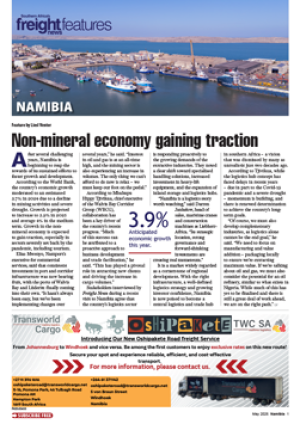By getting involved in road maintenance Walvis Bay-based BHL (Bulk Haulage Logistics) is reducing the distance between Walvis Bay and the western Copperbelt by around 500 kilometres.
The company has taken the responsibility of grading an untarred section between Kaoma and Kasempa in northwest Zambia in order to make Walvis Bay more competitive as a regional gateway, says Francois Becker, general manager of BHL Namibia.
A Zambian government project to provide a tarred road between the Namibian and Botswana border posts and the Copperbelt as an alternative to the route through Lusaka has seen most of the road between Katima Mulilo and Solwezi upgraded and tarred, with a small section remaining.
Using this route BHL trucks reach the Copperbelt in five days out of Walvis Bay, and take five days on the return trip.
“Not only is the route shorter, but it is also safer as the road is only used by truckers and locals,” he says.
BHL’s main Zambian depot is in Solwezi, and has an office in Ndola to support cargo moving in and out of the Democratic Republic of Congo.
With higher productivity comes lower costs, which makes BHL more competitive in the marketplace.
The company’s fleet has grown from 90 to 160 superlinks over the past two years. As important for Becker is the fact that it also lowers the cost of using Walvis Bay. There is growing interest in using the corridor, even from Chinese companies that are able to use Walvis Bay as an alternative to the ports on the eastern seaboard because of the direct calls between Walvis Bay and the east.
Mines are also starting to use the Namibian port for the importation of sulphur and sodium nitrate.
“It is 500 kilometres closer than Richards Bay, and one less set of borders to clear.” Securing these volumes is important because it helps with balancing the north-south traffic on the corridor – which in turn drives down costs.
CAPTION
Francois Becker, general manager of BHL Namibia

